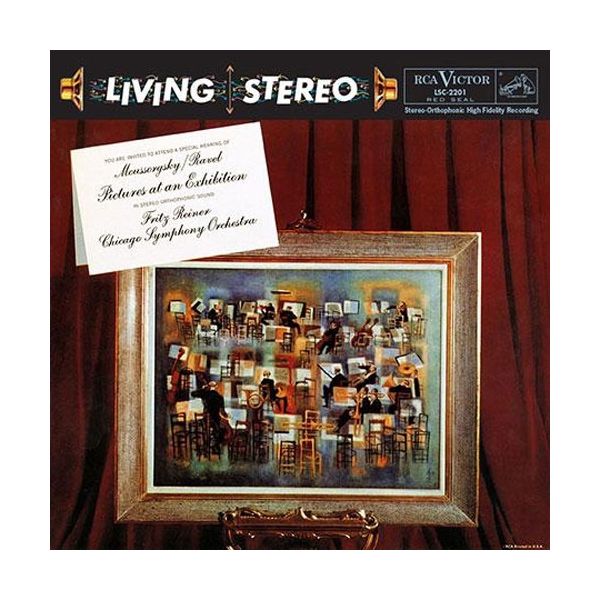Fritz Reiner - Ravel: Pictures at an Exhibition/ Moussorgsky
RCA Living Stereo — the gold standard for top quality orchestral performance and sound!
Remastered from the original master tape by Ryan Smith at Sterling Sound
RCA Living Stereo — the gold standard for top quality orchestral performance and sound!
Remastered from the original master tape by Ryan Smith at Sterling Sound
"On the Analogue Productions SACD the solo trumpet image in the Promenade is rock solid and focused where it should be, toward the back of the orchestra. The same is true of various other instruments." — Arthur Lintgen, The Absolute Sound, January 2015
Another sonic and musical blockbuster from the unbeatable combo of Reiner and RCA (and Mohr & Layton). Recorded in 1957 at Chicago's Orchestra Hall; the original analog session tapes were used in mastering for LPs and SACDS. Mussorgsky's inspiration for Pictures was the death of his dear friend, the architect and visual artist Victor Hartman. Having died at age 39, Hartman had not yet had the opportunity to realize any of his architectural visions, and Mussorgsky was angered that his friend would have no legacy. The Architects' Society arranged an exhibition of some of Hartman's sketches — some of architecture, others of characters or scenes from everyday life. The tribute was enough to give Mussorgsky ideas for his composition, but not enough to give Hartman any lasting place in history. Today, of all of the sketches that were captured in music, only six can be positively identified.
The piece is known today primarily through the orchestral version created by Maurice Ravel in 1922. In fact, the work had already been orchestrated multiple times, by a variety of lesser names. Some conductors today find that Ravel's version, in spite of its color, sacrifices some of the coarse nature inherent in Mussorgsky's piano original. Furthermore, Ravel worked from Rimsky-Korsakov's edited version of the piano part — the only one available at the time — which changed some notes and rhythms.
None of the orchestrations, however, change the fundamental spirit of the piece. Mussorgsky imagines himself making his way down the hallway that showcased his late friend's work, with his stately procession represented by the Promenade that opens the piece and returns several times. Upon stopping at each image, he reflects on what he sees. Between the early movements, the promenade returns regularly, as Mussorgsky is conscious of moving from one scene to the next. As the work progresses, however, he becomes less aware of the interval between pictures, and more immersed in the continuous psychological experience of moving from one state of mind to the next. By the end, the composer sees himself transformed by the connection with Hartman through his visual expressions of Russian pride and humanity.
Thus, here is the greatest orchestra and conductor of stereo's Golden Age in a powerhouse Living Stereo disc. These wide-range recordings are reproduced with astonishing clarity and spectacular presence. This incredible collection of Fritz Reiner's most popular and acclaimed recordings with the Chicago Symphony Orchestra will astonish and delight even the most hardened listener. A must for every music lover!
Musicians:
Chicago Symphony Orchestra
Fritz Reiner, conductor
| Modest Mussorgsky (1839-1881) (Orch. Maurice Ravel) | |
| Pictures At An Exhibition | |
| 1. Promenade | |
| 2. Gnomus | |
| 3. Promenade | |
| 4. Il Vecchio Castella | |
| 5. Promenade | |
| 6. Tuileries | |
| 7. Bydlo | |
| 8. Promenade | |
| 9. Ballet Of The Chicks In Their Shells | |
| 10. Samuel Goldenburg und Schmuyle | |
| 11. The Market Place At Limoges | |
| 12. Catacombae, Sepulchrum Romanum | |
| 13. Con Mortuis In Lingua Mortua | |
| 14. The Hut On Fowl's Legs | |
| 15. The Great Gate Of Kiev |
| By Labels | Analogue Productions |
|---|


